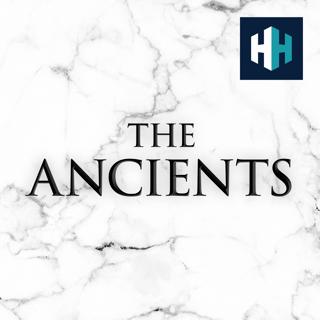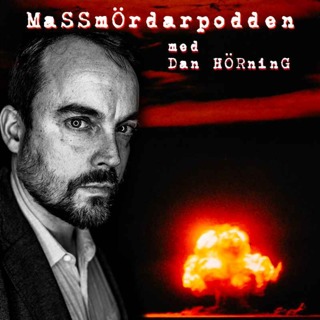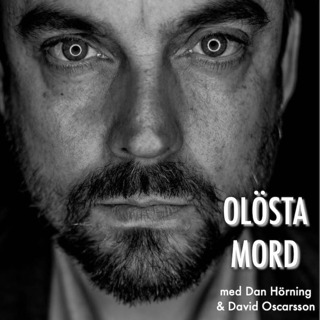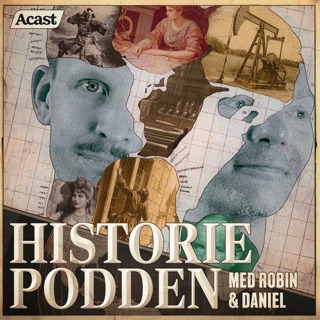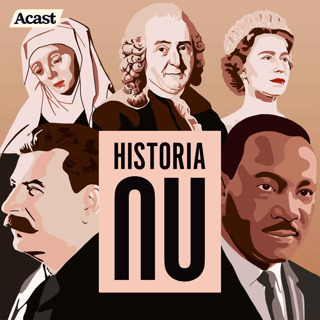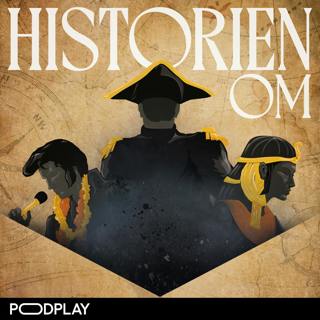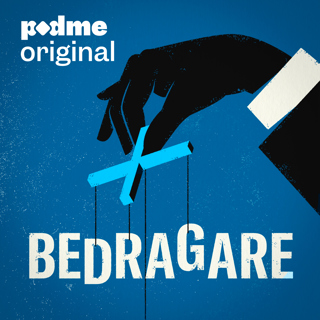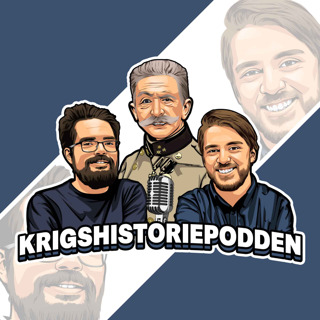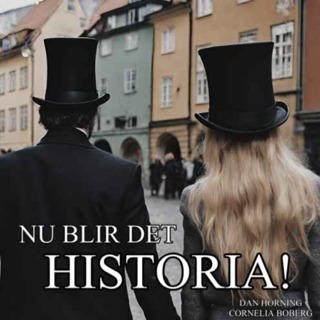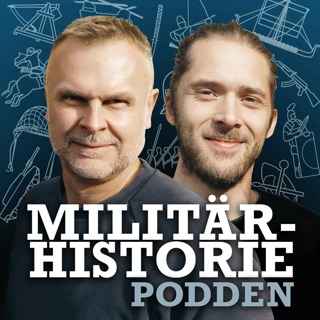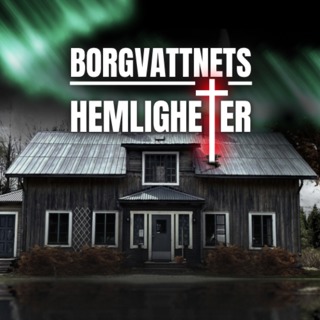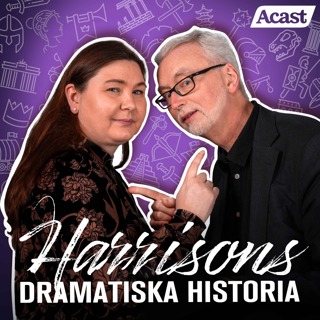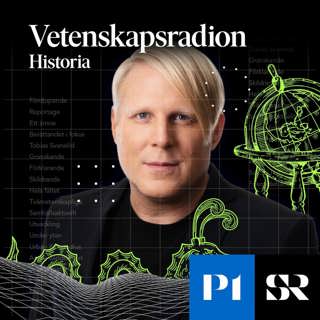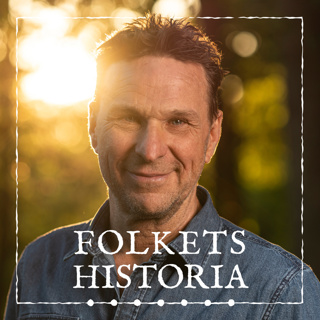
The Garamantes: Farming the Sahara
Greco-Roman historians including Herodotus, Tacitus and Pliny the Elder would have us believe that the Garamantes were simple uncivilized cattle herders, living in sporadic camp dwellings. Until archaeological excavations began in the 1960s, this categorisation remained in place. Luckily, archaeologists like David Mattingly have dedicated years of research to sifting the fact from the fiction in the story of these residents of present day Libya. In this episode, David provides us with the revised version of the Garamantes’ civilisation. This includes masterful innovations in irrigation which allowed the Garamantes to farm two crops a year under the heat of the Saharan sun, as well as evidence of a social hierarchy and engagement in foreign trade. Listen as David turns the stereotype of the Garamantes on its head. Hosted on Acast. See acast.com/privacy for more information.
13 Dec 202050min

Scotland's Enigmatic Ancient Structures
Brochs. Early archaeologists believed that they must have been built by the Danish, that the indigenous population could never have managed it. More recent suggestions have been that architects travelled Scotland, spreading the plans for these Iron Age ‘round houses on steroids’. Iain Maclean came on The Ancients to shed a little light on the truth of the stone buildings found across Scotland, particularly on the coastline. Whilst mentions of Romans, Egyptians and Greeks are familiar to our ears, the Scottish Celts have fallen under the radar. By studying brochs, archaeologists have not only uncovered the amazing architecture which has kept many of them standing, but have also learned more about the societies that built them. By examining the spread of the structures over time, they have been able to track changing climates; and by excavating the contents of the buildings, they have been able to track the communities’ ways of living off the land. Iain dreamt up the concept of the Broch Project for Caithness and, when he isn’t building brochs from various different materials, is spreading knowledge of this little understood part of Scottish history through events and community outreach. Hosted on Acast. See acast.com/privacy for more information.
10 Dec 202031min

Old Testament Warriors
It’s probably the most famous book in the world, and it’s also essentially the only literary source which covers the genesis of warfare and the nation state. Simon Elliott is an archaeologist, historian and broadcaster. He came onto the podcast to talk to Tristan about 7,500 years of history - in under an hour. Using the Bible as a jumping off point, Simon takes us through the technological developments and innovation of warfare, bringing in other archaeological findings to support the singular perspective of the bible. This episode runs through the first walled settlement at Jericho, the first battle chariots and the development of different strategies. This truly is a who’s who of the Ancients, including the Assyrians, Babylonians, Sumerians, Akkadians, Egyptians of all kingdoms, Hittites, Sea Peoples, Philistines and Hebrews. Hosted on Acast. See acast.com/privacy for more information.
6 Dec 202049min

Spartacus: Life or Legend?
‘I’m Spartacus!’ In the field of epic film making, the 1960 historical drama ‘Spartacus’, is legendary. Directed by Stanley Kubrick, adapted from the Howard Fast novel by Red Scare blacklisted screenwriter, Dalton Trumbo, and starring Kirk Douglas, Laurence Olivier, Peter Ustinov and Jean Simmons; it is a classic. But how much of the plot has emerged from the true story of a Thracian gladiator and slave who escaped his Roman captors and led an unsuccessful but impressive rebellion against their oppressors? How much of the film’s message was formed by the personalities involved in its creation, and the context in which it was made. In her own words, Dr Fiona Radford devoted years of her life to the man with the most memorable chin cleft in the world - Kirk Douglas, specifically as Spartacus. Her thesis traced the production history of this film, examining in particular the effect that the turbulent process had on the portrayal of female characters. Having taught at Macquarie University, ANU and the University of Sydney, she currently teaches history at secondary school level, and her conversation with Tristan in this episode is an eye-opener to 1950s film making as well as the legend of Spartacus. Hosted on Acast. See acast.com/privacy for more information.
3 Dec 202047min

Dura-Europos: The Syrian Pompeii
When we think of Pompeii, we remember the city which became frozen in time after a natural catastrophe. Well, in 1920, exactly 100 years ago, another 'frozen city' was rediscovered. This time it was Dura-Europos, and rather than falling victim to a volcano, this city was destroyed after a bloody siege in 256 AD. Whilst there is no historical record of life in the Hellenistic, Parthian and Roman border city and garrison, its remains have proven to be a rich source for archaeologists since the 1920s. Between the only complete example of the semi-cylindrical Roman legionary shield and the perfect oval shields with beautiful paintings of Greeks and Trojans or Greeks and Amazons; beyond the regimental records and complete horse armour and the Palmyrene Gate; archaeologists have uncovered the story of the city. Tristan was joined on the podcast by Simon James from the University of Leicester, who talked through what we now know about life in Dura-Europa and the relationships between the Roman garrison, their dependents and the other inhabitants. He also offers a play-by-play of the battle which brought this city to a halt, and possibly one of the earliest examples of chemical warfare, all discovered through archaeology. Hosted on Acast. See acast.com/privacy for more information.
29 Nov 202049min

Pompeii and the Eruption of Mount Vesuvius
Pompeii is back in the news. An extraordinary new, touching discovery, found during the Great Pompeii Project of Professor Massimo Osanna and his team. Roughly 700 metres northwest of Pompeii, in the remains of a suburban Roman villa, archaeologists have unearthed the incredibly-preserved remains of two men, victims of the infamous eruption of Mount Vesuvius that occurred almost 2,000 years ago in 79 AD.So what do we know about the eruption? What do we know about this terrible event that has left Pompeii with this astonishing legacy? Daisy Dunn came back on the show for this special, emergency podcast to talk through what we know about the eruption and those who witnessed it.Daisy is the author of In The Shadow of Vesuvius: A Tale of Two Plinys. She has also appeared on the Ancients podcast earlier this year, talking about Rome’s most erotic poet Catullus. Hosted on Acast. See acast.com/privacy for more information.
26 Nov 202051min

Linothorax: Kevlar of the Ancients
The House of the Faun in Pompeii is known for being one of the largest and most impressive private residences in the ancient city. Among its many works of art is a depiction of Alexander the Great in battle. In previous episodes we have discussed Alexander’s rule and empire, but this time, let’s focus on his armour, as shown in this mosaic on the floor of the House of Faun, the only contemporary portrayal of linothorax on a known figure. For, instead of wearing bronze or iron armour as one might expect, Alexander is going into battle wearing a breastplate of linen. Gregory Aldrete has spent 12 years studying the composition and effectiveness of this ancient armour used by many nations around the Mediterranean. To do so, he recreated the armour from scratch, using authentic materials. In this episode Gregory, Professor Emeritus from The University of Wisconsin, Green Bay, speaks with Tristan about how this armour protected one of the most powerful conquering armies of all history, despite being made of a soft fabric. Hosted on Acast. See acast.com/privacy for more information.
22 Nov 202048min

Volcanic Vineyards of Pompeii
An ancient town, buried and preserved beneath volcanic ash, Pompeii is a gift to archaeologists and historians seeking to find out more about the lives of the civilians in a regular Roman town. Beyond the well recognised plaster casts of the bodies of people and animals alike, and the structures and artwork maintained in situ, however, is evidence of a very specific system. That is the system of the cultivation of grapes and the process of extracting every usable substance from them to make wine. Positioned in the Campania region of Italy, Pompeii shared fertile soils, perfect climatic conditions and proximity to a busy sea port. The grapes of Pompeii may have ended up on the tables of the house at which they were grown; they might have been made into low quality wine for manual workers or better quality wine valued at more than the wages of many; or, they might have been shipped far and wide.Emlyn Dodd is a Fellow at the Australian Archaeological Institute in Athens and is currently directing a survey project across Cycladic islands which, among other things, is investigating the production of wine and oil in the Classical to Late Antique eras. He spoke to Tristan about what the evidence from Pompeii tells us about grape growth and wine production there, and whether this can be scaled out to other settlements in the Roman Mediterranean. Hosted on Acast. See acast.com/privacy for more information.
19 Nov 202035min
